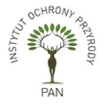
Obiekt
Tytuł: Historical-geographical determinants of the west-east territorial disparities in the Central European countries
Inny tytuł:
Wydawca:
Miejsce wydania:
Opis:
Każdy numer posiada własny tytuł.
Typ obiektu:
Abstrakt:
It cannot pass unnoticed that the inner territorial disparities of Central European states, unlike other European countries, show a certain west-east orientation. As the main cause of this phenomenon this contribution presents the fact that the area of Central Europe historically fulfils the function of a transition zone between the West and East, the two sub-regions in Europe. Based on the chosen economic, social and political indicators the article attempts to generalize the dominant spatial gradient of the regional disparities within their territories and to define what determines this state and also which (historical) causes have led to its development.
Bibliografia:
1. Aldcroft D.H., Morewood S., 1995, Economic change in Eastern Europe since 1918. Aldershot: Elgar, 277 pp.
2. Bairoch P., Lévy-Leboyer M. (eds.), 1978, Disparities in Economic Development since the Industrial Revolution. New York: St. Martin´s Press, 428 pp.
3. Baker A.R.H., 2003. Geography and History. Bridging and Divide. Cambridge: Cambridge University Press, 279 pp.
http://dx.doi.org/10.1017/CBO9780511615818 -
4. Bérend I. T., Ránki G., 1974, Economic Development in East-Central Europe in the 19th and 20th Centuries. New York-London: Columbia University Press, 402 pp.
5. Bibó I., 1997, Bída malých národů východní Evropy. Vybrané spisy. Brno-Bratislava: Doplněk-Kalligram, 612 pp.
6. Blažek J., Uhlíř D., 2002, Teorie regionálního rozvoje. Praha: Universita Karlova, 212 pp.
7. Brunet R., 2002, Lignes de force de l’espace européen. Mapplemonde 66 (2), pp. 14-19, http://www.mgm.fr/PUB/Mapplemonde/M202/Brunet.pdf [15 August 2013].
8. Butlin R.A., Dodgshon R.A. (eds.), 1998, An Historical Geography of Europe. Oxford: Clarendon Press, 373 pp.
9. Cahnman W.J., 1949, Frontiers between East and West in Europe. Geographical Review 39, pp. 605-624.
http://dx.doi.org/10.2307/210675 -
10. Cox H. E., Hupchick D. P., 2001, The Palgrave Concise Historical Atlas of Eastern Europe. New York: Palgrave, 130 pp.
11. Crampton R., Crampton B., 1996, Atlas of Eastern Europe in the Twentieth Century. London: Routledge, 297 pp.
12. Czapliński W. (ed.), 1986, The Historical Atlas of Poland. Warszawa-Wrocław: Państwowe Przędsiebiorstwo Wydawnictw Kartograficznych, 56 pp.
13. ČSÚ, 2013, Regional statistics. Czech Statistical Office, http://www.czso.cz/ [8 August 2013].
14. Davies N., 2003, Polsko: dějiny národa ve středu Evropy. Praha: Prostor, 418 pp.
15. DESTATIS, 2013, Regional database. Federal Statistical Office of Germany, https://www.destatis.de/ [8 August 2013].
16. EUROSTAT, 2013, Statistics, http://epp.eurostat.ec.europa.eu/portal/page/portal/statistics/themes [4 September 2013].
17. Forst de Battaglia O., 1960, Zwischeneuropa. Geographisches Rundschau 12, pp. 305-317.
18. Good D.F., 1994, Economic Lag of Central and Eastern Europe: Income Estimates for the Habsburg Successor States, 1870-1910. The Journal of Economic history 54, pp. 869-891.
http://dx.doi.org/10.1017/S0022050700015527 -
19. Gurňák D., 2007, Vývoj politickej mapy stredovýchodnej a juhovýchodnej Európy – historickogeografická analýza. Bratislava: KartPrint, 208 pp.
20. GUS, 2013, Regional statistics. Central Statistical Office of Poland, http://www.stat.dov.pl/ [8 August 2013].
21. Hägerstrand T., 1967, Innovation diffusion as a spatial process. Chicago: University of Chicago Press, 334 pp.
22. Hajnal J., 1983, Two kinds of pre-industrial household formation system. In: Wall R. et al. (eds.): Family forms in historic Europe. Cambridge: Cambridge Univ. Press, pp. 65-104.
23. Halecki O., 2000, Historia Europy – jej granice i podziały. Lublin: Institut Europy Środkowo-Wschodniej, 186 pp.
24. Hampl M. et al, 1996, Geografická organizace společnosti a transformační procesy v České republice. Praha: PřF UK, 395 pp.
25. Haversath J.-B., 1991, Historisch-geographische Aspekte politischer Grenzen in Mitteleuropa mit besonderer Berücksichtigung der heutigen deutsch-tschechischen Grenze. Siedlungsforschung. Archäologie-Geschichte-Geographie 9, pp. 173-198.
26. Havlíček T., Chromý P., 2001, Příspěvek k teorii polarizovaného vývoje území se zaměřením na periferní oblasti. Geografie 106 (1), pp. 1-11.
27. Hoggart K., Buller H., Black R., 1995, Rural Europe. Identity and Change. London: Arnold, 319 pp.
28. Chirot D. (ed.), 1991, The Origins of Backwardness in Eastern Europe. Economic and Politics from the Middle Ages until the Early Twentieth Century. Berkeley-Los Angeles-Oxford: University of California Press, 260 pp.
29. Chromý P., 2004, Historická a kulturní geografie a nové přístupy v regionálním studiu. Praha: Charles University [PhD dissertation], 258 pp.
30. Jordan T.G., 1996, The European Culture Area. New York: HarperCollins College Publishers, 428 pp.
31. Kováč D., 1996, Dějiny Slovenska. Praha: Nakladatelství Lidové noviny, 422 pp.
32. Krejčí O., 2000, Geopolitika středoevropského prostoru. Horizonty zahraniční politiky České republiky a Slovenské republiky. Praha: Ekopress, 319 pp.
33. Krivý V., Feglová V., Balko D., 1996, Slovensko a jeho regiony: Sociokultúrne súvislodti volebného spravanie. Bratislava: Nadácia Média, 414 pp.
34. Křen J., 2005, Dvě století střední Evropy. Praha: Argo, 1109 pp.
35. Ksh, 2013, Regional statistics. Hungarian Central Statistical Office, http://www.ksh.hu/ [8 August 2013].
36. Maddison A., 2002, The world Economy: A Millenial Perspective. Paris: OECD – Development Centre Studies, 383 pp.
37. Magocsi P.R., 2002, Historical Atlas of Central Europe. Seattle: University of Washington Press, 274 pp.
38. Michalski T., 2005, The Geographical Aspects of the Transformation Process in Central and East-Central Europe. Gdynia: Bernandinum, 235 pp.
39. Mládek J. (ed.), 2006, Atlas obyvatelstva Slovenska. Bratislava: Univerzita Komenského, 166 pp.
40. Mládek J., Kusendová D., Marenčáková J. et al., 2006, Demografická analýza Slovenska. Bratislava: Univerzita Komenského, 222 pp.
41. Müller H., 2004, Dějiny Německa. Praha: Nakladatelství Lidové noviny, 609 pp.
42. Najgrakowski M. (ed.), 1993, Atlas Rzeczypospolitej Polskiej. Warszawa: Glowny geodeta kraju, 317 pp.
43. Nováček A., 2005, Vývojové trendy polarizace prostoru v Česku. In: Novotná M. (ed.), Problémy periferních oblastí. Praha: PřF UK, pp. 25-35.
44. Nováček A., 2010, Dualita Evropy: Historickogeografická analýza vývoje a její vymezení. Praha: Charles University [PhD dissertation], 223 pp.
45. Nováček A., 2012a, Dualita Evropy: historickogeografická analýza. Nakladatelství ČGS – edice Geographica, Praha.
46. Nováček A., 2012b, Historical-Geographical Aspects of Duality in Europe. Historická geografie 38 1., pp. 185-203.
47. Nováček A., 2013a, Dualita Evropy jako fenomén a objekt výzkumu. In: Sborník z Výroční konference ČGS: Nové výzvy pro geografii (Brno 3.-7. 9. 2012), Brno: Masarykova univerzita, pp. 239-245.
48. Nováček A., 2013b, Polsko mezi Východem a Západem. Geografické rozhledy 22 (5), pp. 5-6.
49. Pollard S., 1981, Peaceful Conquest. The Industrialization of Europe 1760-1970. Oxford: Oxford University Press, 451 pp.
50. Pounds N.J.G., 1969, Eastern Europe. London: Longman, 912 pp.
51. Pounds N.J.G., Greville J., 1990, An historical geography of Europe. Cambridge: Cambridge Univ. Press, 484 pp.
http://dx.doi.org/10.1017/CBO9780511572265 -
52. Purš J., 1973, Průmyslová revoluce: vývoj pojmu a koncepce. Praha: Academia, 733 pp.
53. Rémond R., 2003, Náboženství a společnost v Evropě. Praha: Nakladatelství Lidové noviny, 273 pp.
54. Rupnik J., 1992, Jiná Evropa. Praha: Prostor, 352 pp.
55. Rykiel Z., 1990, Koncepcje granic w badaniach geograficznych. Przegląd geograficzny 62 (1-2), pp. 23-35.
56. Samsonowicz H. et al., 2007, Polska na przestrzeni wieków. Warszawa: PWN, 804 pp.
57. Scott P., 1998, Development Issues in Marginal Regions. In: Jusilla H., Leimgruber W., Majoral R. (eds.), Perceptions of Marginality, Aldershot: Ashgate, pp. 7-24.
58. Schenk W., 1995, Mitteleuropa – typologische Annäherung an einen schwierigen Begriff aus der Sicht der Geographie. Europa Regional 3 (4), pp. 25-36.
59. Schultz H.-D., 1990, Deutschlands natürliche" Grenzen. In: Demant A. (ed.), Deutschlands Grenzen in der Geschichte, München: Beck, pp. 33-88.
60. Simms A., 1997, Mitteleuropa als Problem der Historischen Geographie. In: Kleefeld K., Burggraaff P. (eds.), Perspektiven der Historischen Geographie: Siedlung – Kulturlandschaft – Umwelt in Mitteleuropa. Bonn, pp. 47-62.
61. Singh R.B., Majoral R. (eds.), 1996, Development Issues in Marginal Regions. Calcutta: Oxford + IBH Publishing, 320 pp.
62. STAT, 2013, Regional statistics. Austrian Statistical Central Office, http://www.statistics.at/ [8 August 2013].
63. Szücs J., 2001, Tri historické regióny Európy. Bratislava: Kalligram, 131 pp.
64. ŠÚ SR, 2013, Regional database. Statistical Office of the Slovak Republik, http://portal.statistics.sk/ [8 August 2013].
65. Tipton F.B., 1976, Regional Variation in the Economic Development of Germany During the Nineteenth Century. Middletown: Wesleyen University Press, 270 pp.
66. Veber V. et al., 2002, Dějiny Rakouska. Praha: Lidové noviny, 727 pp.
67. Wandycz P.S., 2004, Střední Evropa v dějinách od středověku do současnosti. Praha: Academia, 302 pp.
68. Weber M., 1934, Die protestantische Ethik und der Geist des Kapitalismus. Tübingen: J.C.B.Mohr (Paul Siebeck), 206 pp.
Czasopismo/Seria/cykl:
Tom:
Strona pocz.:
Strona końc.:
Szczegółowy typ zasobu:
Format:
Rozmiar pliku 1,9 MB ; application/pdf
Identyfikator zasobu:
oai:rcin.org.pl:53607 ; 1429-7132 ; 10.7163/Eu21.2014.26.1
Źródło:
CBGiOŚ. IGiPZ PAN, sygn.: Cz.6406, Cz.6407 ; kliknij tutaj, żeby przejść
Język:
Prawa:
Prawa zastrzeżone - dostęp nieograniczony
Zasady wykorzystania:
Digitalizacja:
Instytut Geografii i Przestrzennego Zagospodarowania Polskiej Akademii Nauk
Lokalizacja oryginału:
Dofinansowane ze środków:
Unia Europejska. Europejski Fundusz Rozwoju Regionalnego ; Program Operacyjny Innowacyjna Gospodarka, lata 2010-2014, Priorytet 2. Infrastruktura strefy B + R
Dostęp:
Kolekcje, do których przypisany jest obiekt:
- Repozytorium Cyfrowe Instytutów Naukowych > Kolekcje Partnerów > Instytut Geografii i Przestrzennego Zagospodarowania PAN > Publikacje pracowników i Wydawnictw
- Repozytorium Cyfrowe Instytutów Naukowych > Kolekcje Partnerów > Instytut Geografii i Przestrzennego Zagospodarowania PAN > Biblioteka Instytutu > Serie/Czasopisma/Cykle
- Repozytorium Cyfrowe Instytutów Naukowych > Piśmiennictwo > Czasopisma/Artykuły
Data ostatniej modyfikacji:
13 paź 2023
Data dodania obiektu:
8 maj 2015
Liczba pobrań / odtworzeń:
1004
Wszystkie dostępne wersje tego obiektu:
https://rcin.org.pl/publication/71948
Wyświetl opis w formacie RDF:
Wyświetl opis w formacie RDFa:
Wyświetl opis w formacie OAI-PMH:
| Nazwa wydania | Data |
|---|---|
| Nováček A. - Historical-geographical determinants of the west-east territorial disparities in the Central European countries | 13 paź 2023 |
Obiekty Podobne
Łowmiański, Henryk (1898–1984)
Naumann, Johann Andreas (1747–1826) Hennicke, Carl Richard (1865–1941)
Kovács, András Donát Farkas, Jenő Zsolt Varjú, Viktor Szalai, Ádám Lennert, József Hoyk, Edit Csáki, Béla
Csáky, Moritz
Ascherson, Paul (1834–1913) Graebner, Paul (1871–1933)

 INSTYTUT ARCHEOLOGII I ETNOLOGII POLSKIEJ AKADEMII NAUK
INSTYTUT ARCHEOLOGII I ETNOLOGII POLSKIEJ AKADEMII NAUK
 INSTYTUT BADAŃ LITERACKICH POLSKIEJ AKADEMII NAUK
INSTYTUT BADAŃ LITERACKICH POLSKIEJ AKADEMII NAUK
 INSTYTUT BADAWCZY LEŚNICTWA
INSTYTUT BADAWCZY LEŚNICTWA
 INSTYTUT BIOLOGII DOŚWIADCZALNEJ IM. MARCELEGO NENCKIEGO POLSKIEJ AKADEMII NAUK
INSTYTUT BIOLOGII DOŚWIADCZALNEJ IM. MARCELEGO NENCKIEGO POLSKIEJ AKADEMII NAUK
 INSTYTUT BIOLOGII SSAKÓW POLSKIEJ AKADEMII NAUK
INSTYTUT BIOLOGII SSAKÓW POLSKIEJ AKADEMII NAUK
 INSTYTUT CHEMII FIZYCZNEJ PAN
INSTYTUT CHEMII FIZYCZNEJ PAN
 INSTYTUT CHEMII ORGANICZNEJ PAN
INSTYTUT CHEMII ORGANICZNEJ PAN
 INSTYTUT FILOZOFII I SOCJOLOGII PAN
INSTYTUT FILOZOFII I SOCJOLOGII PAN
 INSTYTUT GEOGRAFII I PRZESTRZENNEGO ZAGOSPODAROWANIA PAN
INSTYTUT GEOGRAFII I PRZESTRZENNEGO ZAGOSPODAROWANIA PAN
 INSTYTUT HISTORII im. TADEUSZA MANTEUFFLA POLSKIEJ AKADEMII NAUK
INSTYTUT HISTORII im. TADEUSZA MANTEUFFLA POLSKIEJ AKADEMII NAUK
 INSTYTUT JĘZYKA POLSKIEGO POLSKIEJ AKADEMII NAUK
INSTYTUT JĘZYKA POLSKIEGO POLSKIEJ AKADEMII NAUK
 INSTYTUT MATEMATYCZNY PAN
INSTYTUT MATEMATYCZNY PAN
 INSTYTUT MEDYCYNY DOŚWIADCZALNEJ I KLINICZNEJ IM.MIROSŁAWA MOSSAKOWSKIEGO POLSKIEJ AKADEMII NAUK
INSTYTUT MEDYCYNY DOŚWIADCZALNEJ I KLINICZNEJ IM.MIROSŁAWA MOSSAKOWSKIEGO POLSKIEJ AKADEMII NAUK
 INSTYTUT PODSTAWOWYCH PROBLEMÓW TECHNIKI PAN
INSTYTUT PODSTAWOWYCH PROBLEMÓW TECHNIKI PAN
 INSTYTUT SLAWISTYKI PAN
INSTYTUT SLAWISTYKI PAN
 SIEĆ BADAWCZA ŁUKASIEWICZ - INSTYTUT TECHNOLOGII MATERIAŁÓW ELEKTRONICZNYCH
SIEĆ BADAWCZA ŁUKASIEWICZ - INSTYTUT TECHNOLOGII MATERIAŁÓW ELEKTRONICZNYCH
 MUZEUM I INSTYTUT ZOOLOGII POLSKIEJ AKADEMII NAUK
MUZEUM I INSTYTUT ZOOLOGII POLSKIEJ AKADEMII NAUK
 INSTYTUT BADAŃ SYSTEMOWYCH PAN
INSTYTUT BADAŃ SYSTEMOWYCH PAN
 INSTYTUT BOTANIKI IM. WŁADYSŁAWA SZAFERA POLSKIEJ AKADEMII NAUK
INSTYTUT BOTANIKI IM. WŁADYSŁAWA SZAFERA POLSKIEJ AKADEMII NAUK


































